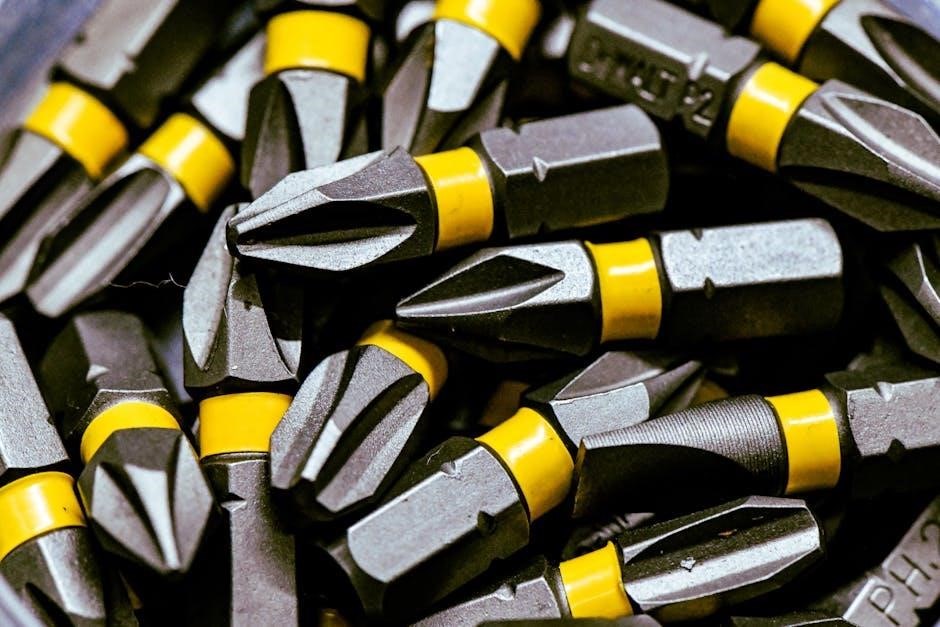Manual transmissions use a clutch to connect and disconnect the engine from the gearbox‚ while automatics rely on a torque converter for smooth power transfer․ Unlike automatics‚ manual transmissions do not utilize torque converters‚ as the clutch serves the primary function of disengaging power during gear shifts․ This difference fundamentally impacts both efficiency and driving experience‚ with manuals often favored for direct control and automatics for convenience․ The torque converter’s role in automatics is to multiply torque and provide seamless acceleration‚ whereas manuals achieve similar results through gear ratios and driver input․ Understanding these components is essential for appreciating the distinct advantages of each transmission type․
What Are Manual Transmissions?
A manual transmission is a type of gearbox that requires the driver to manually change gears using a clutch pedal and a gearshift․ It operates by disconnecting the engine from the transmission via the clutch‚ allowing the driver to select the appropriate gear ratio for varying driving conditions․ Manual transmissions are typically more fuel-efficient and cost-effective compared to automatics‚ as they lack the complexity of torque converters and additional components․ The clutch pedal engages and disengages the engine’s power‚ providing direct control over the vehicle’s acceleration and deceleration․ This mechanical connection between the engine and wheels offers a more engaging driving experience‚ making manual transmissions popular among enthusiasts who value precision and control․

What Is a Torque Converter?
A torque converter is a fluid coupling device used in automatic transmissions to transfer and multiply torque from the engine to the transmission․ It consists of three main components: the impeller‚ stator‚ and turbine․ The impeller‚ driven by the engine‚ pumps fluid to the turbine‚ which connects to the transmission input shaft․ The stator redirects fluid flow‚ amplifying torque during acceleration․ Unlike manual transmissions‚ which use a clutch to disconnect the engine‚ torque converters allow the engine to remain connected while the vehicle is stationary‚ eliminating the need for constant clutch operation․ This makes automatics smoother in stop-and-go traffic‚ though torque converters introduce some efficiency loss compared to manuals‚ especially in low-load conditions; Modern torque converters often include a lock-up clutch to improve efficiency at higher speeds․
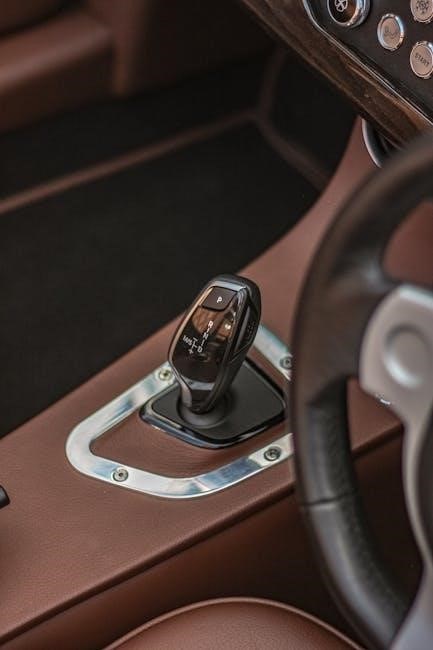
The Role of Torque Converters in Automatic Transmissions
Torque converters act as fluid couplings‚ transferring and multiplying torque from the engine to the transmission․ They enable smooth acceleration and allow the engine to remain connected while stationary․
How Torque Converters Work
A torque converter is a fluid coupling device that transfers power from the engine to the transmission․ It consists of three main components: the impeller‚ stator‚ and turbine․ The impeller‚ driven by the engine‚ spins a fluid that transfers energy to the turbine‚ which connects to the transmission․ At low speeds‚ the stator redirects fluid flow to multiply torque‚ enabling smooth acceleration․ As speed increases‚ the stator freewheels‚ and the converter locks up directly‚ improving efficiency․ This mechanism allows the engine to remain engaged while the vehicle is stationary‚ eliminating the need for frequent braking in traffic․ Modern converters often include a lock-up clutch for better fuel efficiency at higher speeds․
Advantages of Torque Converters in Automatics
Torque converters offer smooth and seamless power delivery‚ eliminating the need for manual gear shifts․ They provide torque multiplication at low speeds‚ enhancing acceleration from a standstill․ This is particularly beneficial in stop-and-go traffic‚ where constant braking and accelerating are minimized․ Additionally‚ torque converters allow the engine to remain disengaged from the wheels when stationary‚ reducing wear on the transmission and the need for ride-holding brakes․ They also dampen engine vibrations‚ contributing to a quieter and more comfortable driving experience․ Furthermore‚ modern torque converters often feature lock-up clutches‚ which engage at higher speeds to reduce fuel consumption and improve efficiency․ These advantages make torque converters a key component in automatic transmissions‚ balancing performance‚ comfort‚ and efficiency effectively․
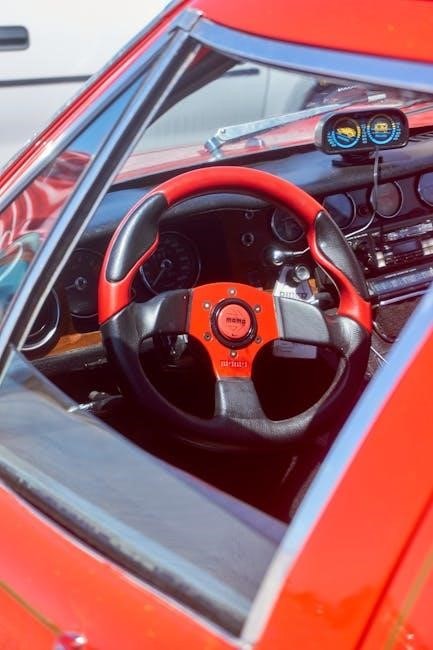
Manual vs․ Automatic Transmissions: Key Differences
Manual transmissions use a clutch to disconnect the engine‚ offering driver control‚ while automatics rely on a torque converter for seamless‚ clutch-free gear shifts and ease of use․
Clutch Operation in Manual Transmissions
In manual transmissions‚ the clutch is a critical component that temporarily disconnects the engine from the transmission‚ allowing gear changes without grinding․ Operated by a pedal‚ the clutch disengages when pressed‚ enabling the driver to shift gears smoothly․ Unlike automatics‚ which use a torque converter‚ manuals rely on this mechanical connection for control․ The clutch’s direct engagement provides precise acceleration and efficient power transfer‚ making it a key feature for drivers seeking hands-on involvement․ Its operation requires driver input‚ but it offers better fuel efficiency and a more connected driving experience compared to automatic systems․ The clutch also prevents the engine from stalling during stops‚ making it essential for manual transmission functionality․
Torque Converter Operation in Automatics
A torque converter is a fluid coupling device in automatic transmissions that transfers engine power to the gearbox․ It consists of an impeller‚ stator‚ and turbine‚ using hydraulic fluid to engage gears smoothly․ Unlike manual clutches‚ the torque converter allows the engine to remain connected to the transmission‚ enabling the car to idle or accelerate without stalling․ It multiplies torque at low speeds‚ improving acceleration‚ and locks up at higher speeds for direct power transfer․ This operation eliminates the need for manual gear shifting‚ providing a seamless and convenient driving experience․ The torque converter’s ability to adapt to varying driving conditions makes it a cornerstone of automatic transmissions‚ enhancing both comfort and performance․
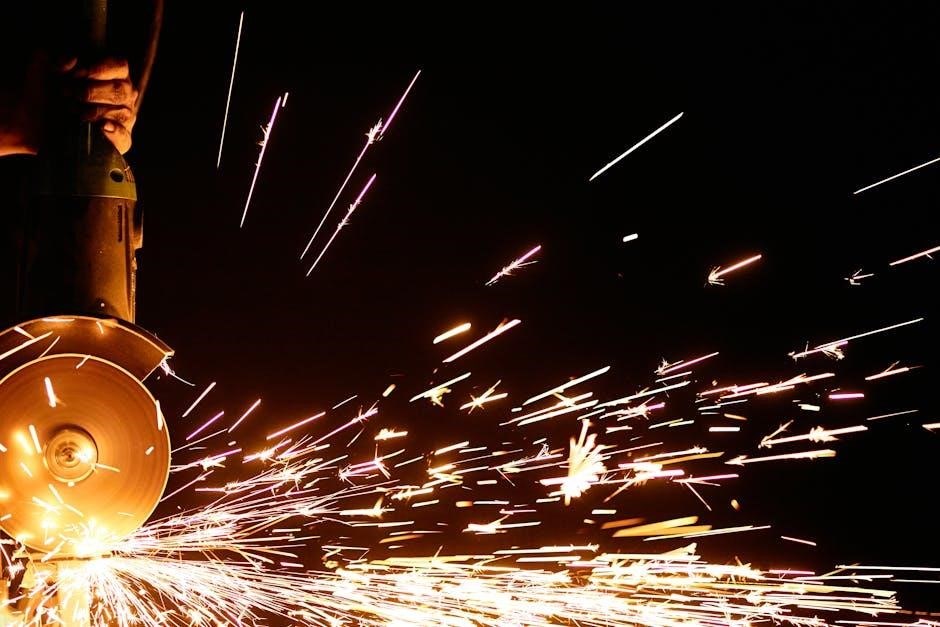
Why Manual Transmissions Do Not Use Torque Converters
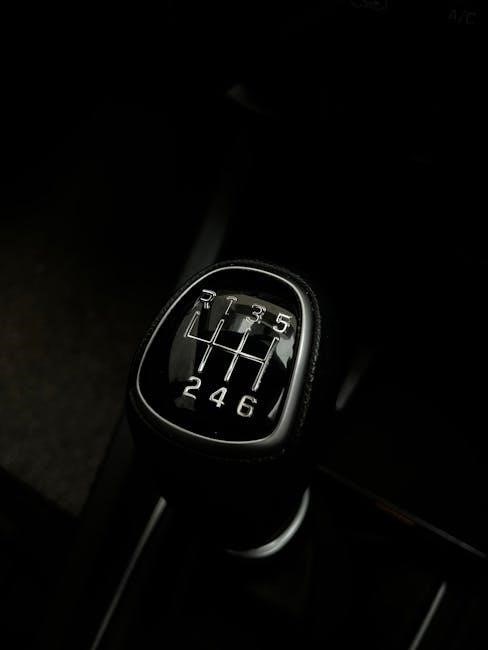
Manual transmissions do not use torque converters because they rely on a clutch to engage and disengage the engine from the gearbox‚ eliminating the need for fluid-based power transfer․
Functionality of the Clutch in Manual Transmissions
The clutch in a manual transmission is a friction-based component that temporarily disconnects the engine from the gearbox‚ enabling smooth gear shifts․ When the driver presses the clutch pedal‚ it disengages the engine’s power‚ allowing the transmission to change gears without grinding or damage․ Upon releasing the pedal‚ the clutch re-engages‚ transferring power to the selected gear․ This mechanical connection provides direct control over the vehicle‚ making it essential for manual transmissions․ Unlike torque converters in automatics‚ the clutch offers a more efficient and driver-intensive experience‚ requiring skill to operate effectively․ Its simplicity and lack of fluid-based power transfer contribute to better fuel efficiency and a more connected driving feel․
Efficiency and Performance Considerations
Manual transmissions generally offer better fuel efficiency and performance compared to automatics due to their direct mechanical connection‚ eliminating the energy loss associated with torque converters․ The absence of a torque converter reduces parasitic power loss‚ allowing more engine power to reach the wheels․ This direct connection enhances acceleration and responsiveness‚ making manuals preferred for driving enthusiasts․ However‚ the efficiency advantage can depend on driver skill‚ as improper shifting can negate benefits․ In contrast‚ automatics with torque converters may sacrifice some efficiency but provide smoother operation in stop-and-go conditions․ Modern advancements‚ like dual-clutch transmissions‚ aim to bridge this gap‚ offering both efficiency and convenience without the need for a torque converter․

Can a Torque Converter Be Used in a Manual Transmission?
While technically possible‚ integrating a torque converter into a manual transmission is impractical due to efficiency losses and added complexity‚ though niche applications may benefit from smooth power delivery․
Technical Feasibility and Challenges
Integrating a torque converter into a manual transmission poses significant technical challenges․ The primary issue lies in the fundamental incompatibility between the clutch-based operation of manuals and the fluid coupling mechanism of torque converters․ Torque converters are designed to maintain constant engine engagement‚ which conflicts with the manual transmission’s need to disengage power during gear shifts․ Additionally‚ the fluid coupling introduces inefficiencies due to energy loss in the form of heat‚ which is mitigated in automatics through lock-up clutches but remains a concern in manual setups․ Furthermore‚ the added weight and complexity of incorporating a torque converter would increase production and maintenance costs‚ making it economically less viable․ While hybrid systems like dual-clutch transmissions exist‚ they represent a distinct category rather than a true manual transmission with a torque converter․

Practical Implications for Driving Experience
Integrating a torque converter into a manual transmission would significantly alter the driving experience․ The primary advantage would be smoother acceleration and reduced driver effort‚ as the torque converter eliminates the need for constant clutch engagement․ This could make manual transmissions more accessible to inexperienced drivers and improve ease of use in stop-and-go traffic․ However‚ it would also diminish the direct control and tactile feedback that manual transmission enthusiasts value․ The driving experience would likely feel more akin to an automatic transmission‚ potentially alienating purists who appreciate the engagement of manual gear shifts․ Additionally‚ the weight and complexity added by the torque converter could affect handling and fuel efficiency‚ further complicating its practical appeal․

Modern Transmission Technologies

Modern transmissions include dual-clutch systems‚ offering rapid shifting‚ and continuously variable transmissions (CVTs) for seamless power delivery‚ enhancing efficiency and performance beyond traditional manuals and automatics․
Dual-Clutch Transmissions: A Hybrid Solution
Dual-clutch transmissions (DCTs) combine the efficiency of manual transmissions with the convenience of automatics․ Using two clutches‚ one for odd gears and one for even‚ DCTs enable rapid‚ smooth shifts without torque converter losses․ This design eliminates the need for a clutch pedal‚ providing automatic gear changes while maintaining mechanical efficiency․ DCTs are lighter and more fuel-efficient than traditional automatics‚ making them ideal for performance and eco-focused vehicles․ However‚ they can lack the driver engagement of pure manual transmissions and may experience low-speed hesitations․ Despite these trade-offs‚ DCTs offer a compelling middle ground between manual and automatic transmissions in modern automotive engineering․
Continuously Variable Transmissions (CVTs)
Continuously Variable Transmissions (CVTs) represent a unique approach to gear shifting‚ using belts and pulleys to provide an infinite number of gear ratios․ Unlike manual transmissions or traditional automatics‚ CVTs eliminate fixed gear steps‚ allowing seamless transitions between ratios․ This design enables the engine to maintain optimal RPM for better fuel efficiency and performance․ CVTs are often lighter and more compact than conventional automatics‚ making them ideal for smaller vehicles; While they lack the driver engagement of manuals and can feel unusual due to their smooth‚ non-stepwise acceleration‚ CVTs offer a practical compromise between efficiency and convenience․ Modern advancements have improved their responsiveness‚ making them a viable option for drivers seeking a balance between performance and practicality․
Manual transmissions do not use torque converters; they rely on a clutch for disengagement․ Torque converters are exclusive to automatics‚ enabling smooth‚ clutch-free operation․
Final Thoughts on Manual Transmissions and Torque Converters
Manual transmissions and torque converters serve distinct purposes‚ catering to different driving preferences and needs․ Manual transmissions rely on a clutch for precise control and efficiency‚ making them ideal for drivers who value direct engagement with the vehicle․ On the other hand‚ torque converters enable smooth‚ automatic shifting‚ providing convenience and ease of use‚ especially in stop-and-go traffic․ While the two systems are fundamentally different‚ they both aim to optimize power delivery and driving performance․ Understanding their roles helps drivers choose the right transmission type for their lifestyle and preferences․
The Future of Transmission Technology
Transmission technology is evolving rapidly‚ with advancements aimed at improving efficiency‚ performance‚ and driver experience․ Dual-clutch transmissions and continuously variable transmissions (CVTs) are gaining popularity‚ offering the best of both manual and automatic worlds․ These systems provide smooth gear changes while maintaining fuel efficiency․ Additionally‚ hybrid and electric vehicles are pushing the boundaries‚ with transmissions optimized for electric motors and regenerative braking․ Automated manual transmissions (AMTs) are also becoming more sophisticated‚ combining the benefits of manual control with automatic convenience․ As automotive trends shift toward sustainability‚ future transmissions will likely focus on reducing weight‚ enhancing torque delivery‚ and integrating seamlessly with alternative powertrains․ The goal is to create systems that are not only efficient but also adaptable to the changing demands of modern driving․
